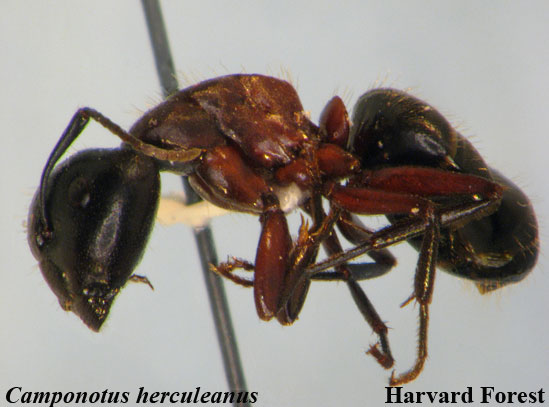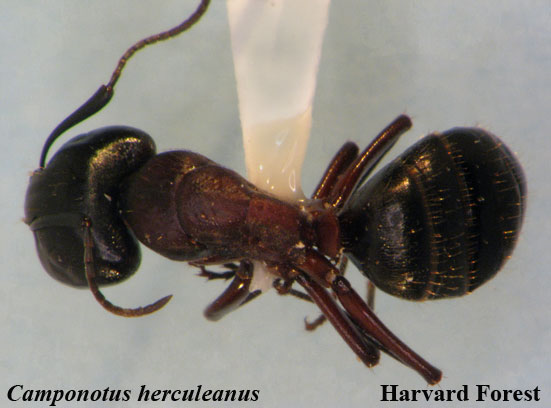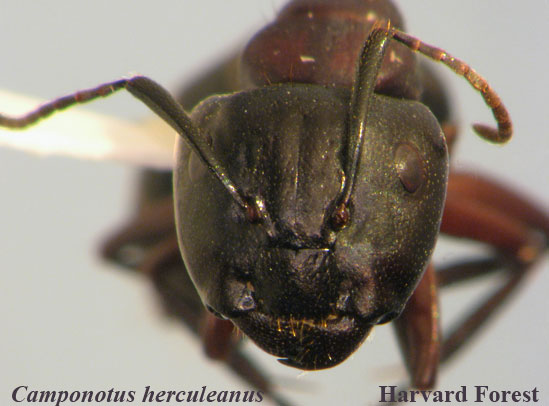1a. Thorax completely black 2
1b. Thorax with some red 3
2a. Large ant, all black; gaster with appressed golden hairs C. pennsylvanicus
2b. Smaller ant, variable in color (may have red on thorax), clypeus notched C. nearcticus
3a. Very large ant, with appressed golden hairs on gaster, red extending to 1st gastric tergite, warmer climates (mid-Connecticut and south) C. chromaiodes
3b. No appressed golden hairs on gaster, and no red on gaster 4
4a. Thorax and legs completely red; gaster shiny and reflective C. novaboracensis
4b. Thorax with some black; legs rarely red 5
5a. Clypeus notched; relatively small; gaster shining C. nearcticus
5b. Hairs on propodeum denser than elsewhere; gular hairs few, short C. herculeanus
Camponotus pennsylvanicus
Common Name: Carpenter Ant
Camponotus pennsylvanicus is found in forests around the edge of the forest, and in wooden buildings. They forage mostly at night on the ground, in tree trunks, and tend insects for honeydew. They nest in rotting woods in trees, logs, stumps, and buildings.
Although Carpenter ants are pests if they are nesting in your home, they serve an important function in the forest ecosystem. They help break down dead standing and fallen trees.
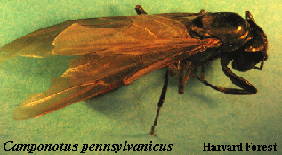
Winged Queen
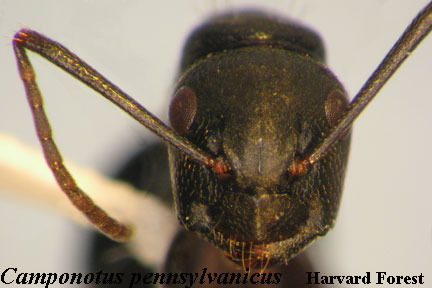
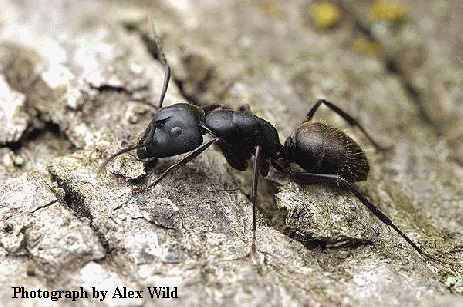
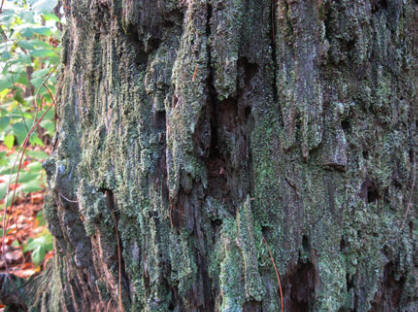
Camponotus novaboracensis
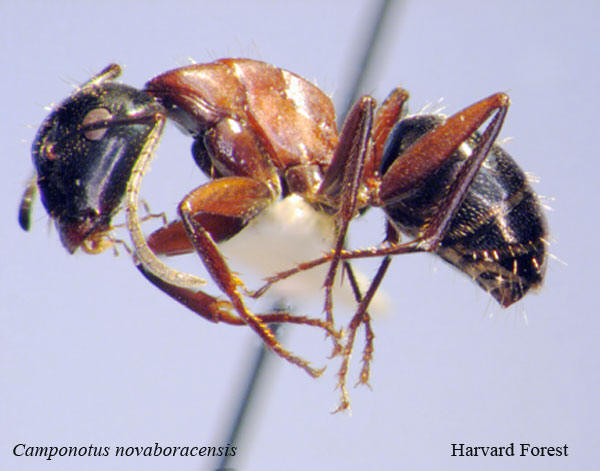
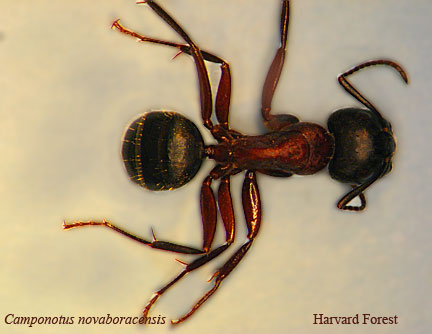
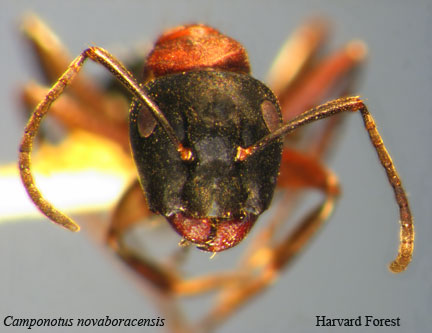
Camponotus herculeanus
